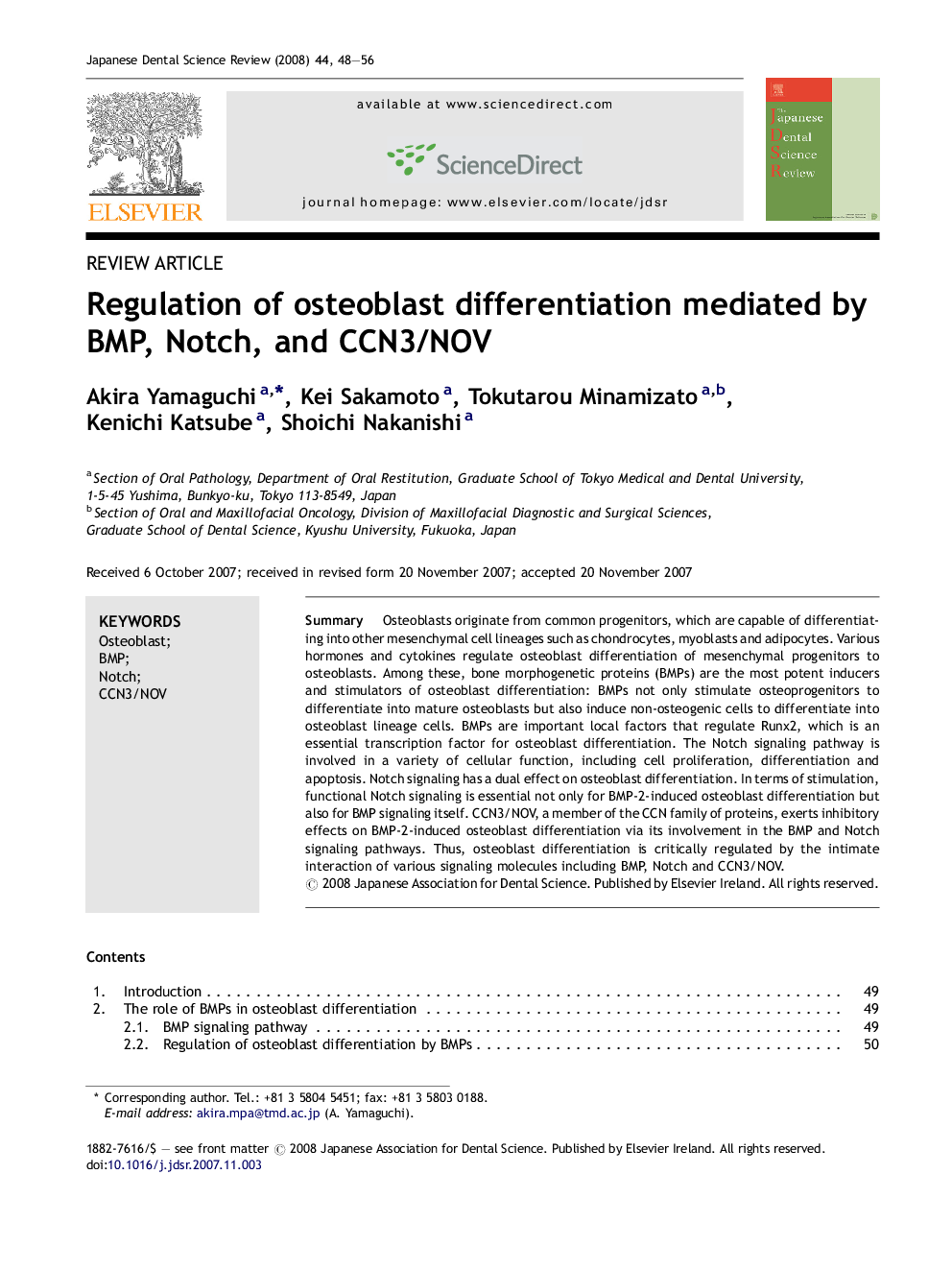| Article ID | Journal | Published Year | Pages | File Type |
|---|---|---|---|---|
| 3136263 | Japanese Dental Science Review | 2008 | 9 Pages |
SummaryOsteoblasts originate from common progenitors, which are capable of differentiating into other mesenchymal cell lineages such as chondrocytes, myoblasts and adipocytes. Various hormones and cytokines regulate osteoblast differentiation of mesenchymal progenitors to osteoblasts. Among these, bone morphogenetic proteins (BMPs) are the most potent inducers and stimulators of osteoblast differentiation: BMPs not only stimulate osteoprogenitors to differentiate into mature osteoblasts but also induce non-osteogenic cells to differentiate into osteoblast lineage cells. BMPs are important local factors that regulate Runx2, which is an essential transcription factor for osteoblast differentiation. The Notch signaling pathway is involved in a variety of cellular function, including cell proliferation, differentiation and apoptosis. Notch signaling has a dual effect on osteoblast differentiation. In terms of stimulation, functional Notch signaling is essential not only for BMP-2-induced osteoblast differentiation but also for BMP signaling itself. CCN3/NOV, a member of the CCN family of proteins, exerts inhibitory effects on BMP-2-induced osteoblast differentiation via its involvement in the BMP and Notch signaling pathways. Thus, osteoblast differentiation is critically regulated by the intimate interaction of various signaling molecules including BMP, Notch and CCN3/NOV.
